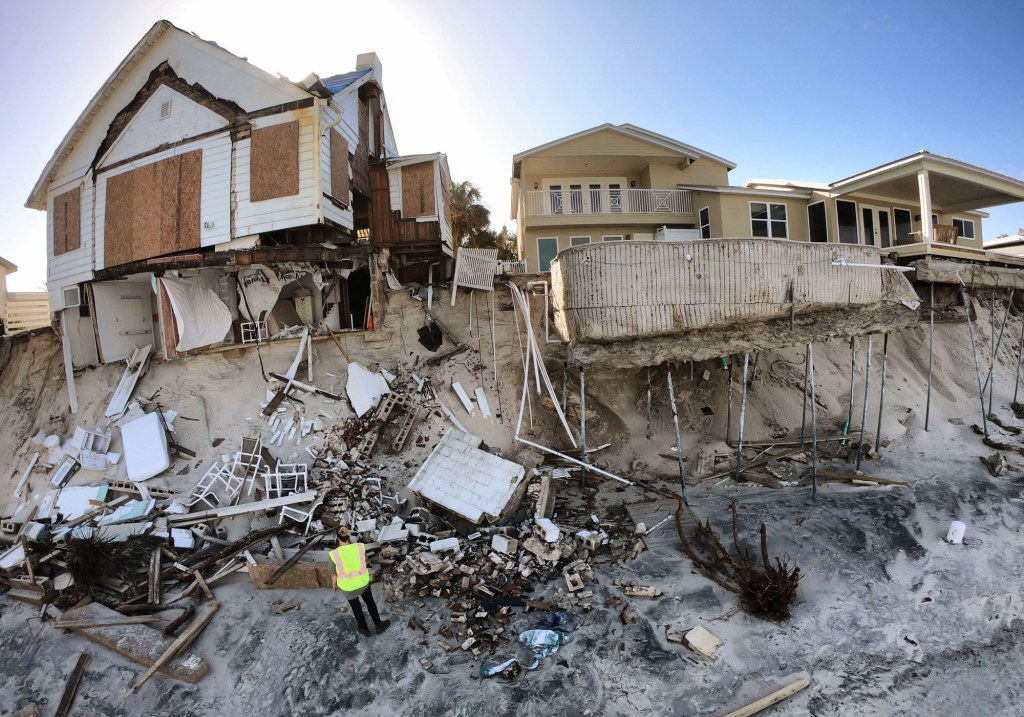If the rising price of homeowners insurance were factored into the U.S. Consumer Price Index — a key metric of inflation — it could have added 80 basis points, or about 0.8%, to last year’s CPI increase of 3.4%, according to an analysis from Bloomberg Intelligence.
By not including home insurance, the CPI “ignores climate costs,” writes BI senior analyst Andrew Stevenson in his April 9 note.
Homeowners insurance costs in the U.S. hit roughly $175 billion in 2023, up 21% over the previous year, according to insurance brokerage Policygenius. The increase is in large part due to climate change, which is driving more extreme fires, floods and storms. The U.S. endured a record 28 weather and climate disasters that caused at least $1 billion in damage last year. As insurers incur higher costs, homeowners are facing higher premiums. Inflation itself is also making it more expensive to pay out claims.
The average cost of insuring a U.S. home last year was $1,905 — 50% higher than the average of $1,272 in 2019, according to the National Association of Insurance Commissioners and Policygenius.
Calculated by the U.S. Bureau of Labor Statistics, CPI measures the average change in prices paid by urban consumers for various goods and services, including both food and fuel. (“Core CPI” excludes food and energy.) CPI includes the category “tenants and household insurance,” but this is more colloquially known as renters insurance. Last year, the average renters insurance cost in the U.S. was $180, up 3% from a year earlier.
Stevenson looked at what would happen if the $1,905 average for home insurance were given the same CPI weight as “tenants and household insurance,” which accounted for just 0.01% of the overall increase in CPI last year. He found that the 21% increase in home insurance could have contributed as much as “84 bps to the index vs a 1-bp gain realized by the 3% rise in tenant and homeowner insurance…
Read the full article here







